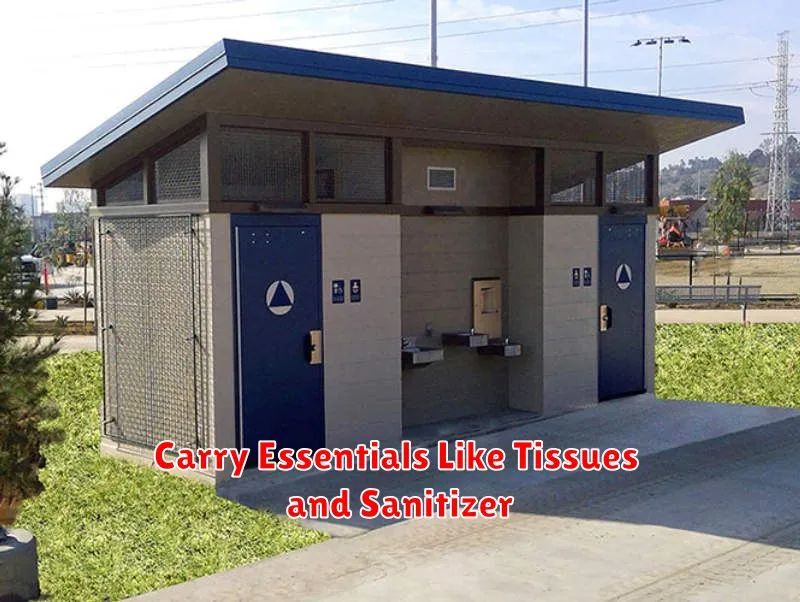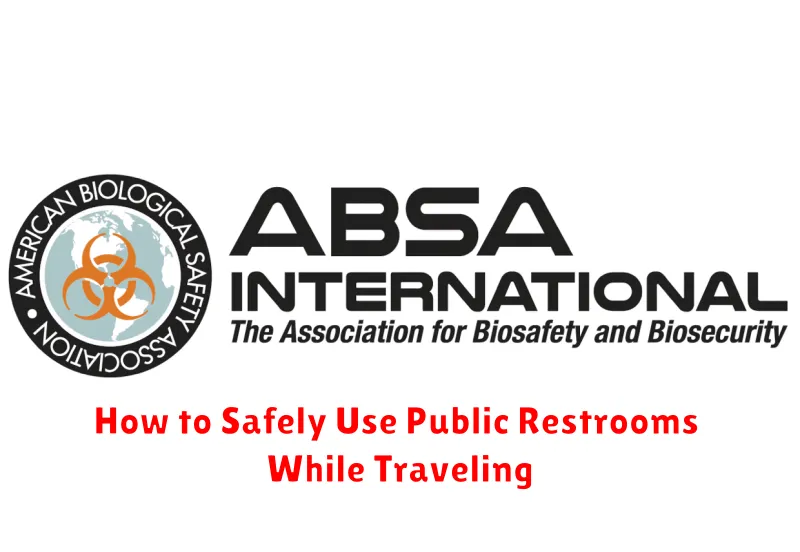Traveling can be an exciting experience, but it also presents unique challenges, particularly when it comes to hygiene. Using public restrooms is often unavoidable while traveling, whether you’re on a road trip, flying across the country, or exploring a new city. Concerns about germs, cleanliness, and safety are common, and understandably so. This article will provide essential tips and strategies for navigating public restrooms safely while you’re on the go, ensuring your health and peace of mind throughout your travels. Learn how to minimize risks and maintain good hygiene practices when using public restrooms while traveling.
From understanding the importance of handwashing to packing the right travel essentials, this guide will equip you with the knowledge you need to confidently use public restrooms. We’ll cover topics such as assessing restroom cleanliness, minimizing contact with surfaces, and proper hand hygiene techniques. Whether you’re a seasoned traveler or embarking on your first adventure, prioritizing safety in public restrooms is crucial. Stay healthy and enjoy your travels with these practical tips for safe and hygienic public restroom usage.
What to Expect from Public Restrooms Abroad
Public restrooms abroad can vary significantly from what you’re accustomed to at home. Be prepared for differences in cleanliness, availability, and even basic amenities. Hygiene standards may not align with your expectations, so carrying hand sanitizer and tissues is highly recommended.
In some countries, you may encounter squat toilets rather than Western-style commodes. These can take some getting used to. Additionally, be aware that toilet paper may not be provided, and you may need to purchase it separately or carry your own. Some restrooms may also charge a small fee for entry.
Accessibility for individuals with disabilities can also be a concern in certain regions. Researching restroom facilities in advance is advisable if accessibility is a requirement. Furthermore, be mindful of local customs. In some cultures, using the left hand in the restroom is considered unclean.
Carry Essentials Like Tissues and Sanitizer

Public restrooms, while a necessity, don’t always meet our desired hygiene standards. Carrying a small pack of tissues can be invaluable. They can be used for everything from covering the toilet seat to opening doors and operating faucets, minimizing direct contact with potentially contaminated surfaces.
Hand sanitizer is another crucial item. While many public restrooms provide soap and water, it’s not always a guarantee. Sanitizer with at least 60% alcohol content can provide a quick and effective way to disinfect your hands if soap and water are unavailable or if you need additional protection. Apply thoroughly after washing and drying your hands.
Consider including sanitizing wipes in your travel kit. These are useful for wiping down surfaces like toilet seats, door handles, or faucet handles before use. This adds an extra layer of protection against germs.
Avoid Restrooms in Isolated Areas
When traveling, especially in unfamiliar places, it’s crucial to prioritize your safety when using public restrooms. One key aspect of this is avoiding restrooms located in isolated or poorly lit areas. These locations can make you a target for theft or other harmful acts.
Opt for restrooms situated in high-traffic areas, preferably within well-lit and populated establishments. Restrooms inside busy restaurants, cafes, or shopping centers are generally safer choices. The presence of other people significantly reduces the risk of becoming a victim of crime.
If you find yourself needing to use a restroom in a less populated location, try to go with a companion. Having someone with you increases your safety and provides an extra layer of security. If traveling alone, be extra vigilant of your surroundings. Avoid using restrooms that appear poorly maintained or that give you a sense of unease. Trust your instincts and prioritize your well-being.
Use Your Foot to Open Doors When Possible
Public restroom doors are a high-contact surface. Minimize contact by using your foot to open any outward-swinging doors. This simple action reduces the spread of germs and bacteria. If the door swings inward, use a paper towel or tissue as a barrier between your hand and the door handle.
If neither of these options is feasible, and you must touch the door handle directly, sanitize your hands thoroughly immediately afterward. Hand sanitizer with at least 60% alcohol content is recommended.
Keep Bags Off the Floor
Public restroom floors are often unsanitary. Avoid placing your bags directly on the floor. This helps prevent the transfer of germs, bacteria, and other undesirable substances onto your belongings. Never set your bag on the floor, especially near toilets or sinks.
If hooks are available, utilize them for hanging your bag. This keeps it elevated and away from contaminated surfaces. If hooks aren’t present, consider using a designated bag holder or placing your bag on a clean, dry surface like the back of the toilet tank (if it appears clean) or a paper towel dispenser. Exercise caution when choosing a surface and prioritize keeping the bag off the floor.
In situations where no alternative surface is available, consider holding your bag or wearing it across your body while using the facilities. While slightly inconvenient, this offers the best protection against contamination. Being mindful of your bag’s placement in public restrooms is a key component of safe and healthy travel.
Be Aware of Hidden Cameras or Unusual Fixtures

Prioritize your privacy in public restrooms by being vigilant about potential recording devices. While rare, hidden cameras can be concealed within seemingly innocuous fixtures. Carefully inspect objects like smoke detectors, air vents, and decorative items for anything unusual, such as small lenses or wires.
Look for any signs of tampering or fixtures that seem out of place. If you notice anything suspicious, do not use the restroom and report it immediately to the establishment’s management or security personnel. Your observation could protect others from potential privacy violations.
If you are unsure about the safety of a restroom, opt for a different facility if possible. Being cautious and aware of your surroundings is crucial for maintaining your personal safety and privacy while using public restrooms, especially when traveling.
Wash Thoroughly and Exit Quickly
After using the facilities, thorough handwashing is crucial. Use soap and water, scrubbing for at least 20 seconds. Pay attention to the backs of your hands, between your fingers, and under your nails.
If soap and water aren’t available, use an alcohol-based hand sanitizer with at least 60% alcohol. Apply a generous amount and rub your hands together until dry.
Once you’ve washed your hands, use a paper towel to turn off the faucet and, if possible, to open the restroom door. This minimizes contact with frequently touched surfaces. Exit the restroom promptly.

